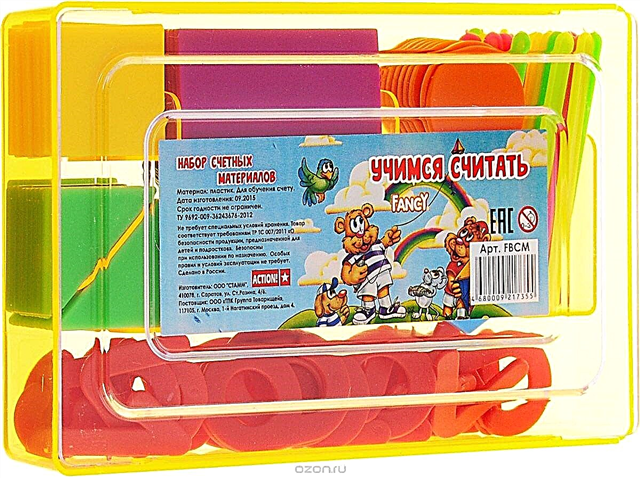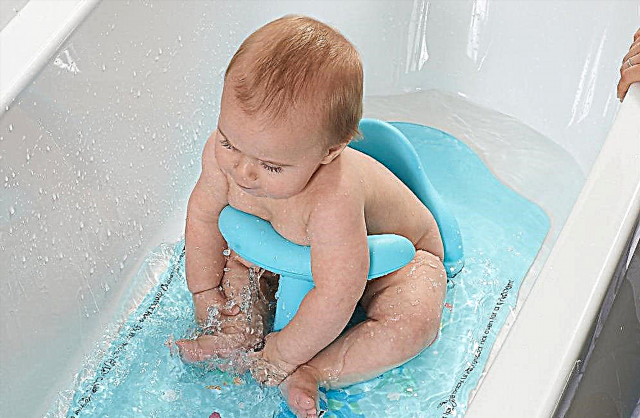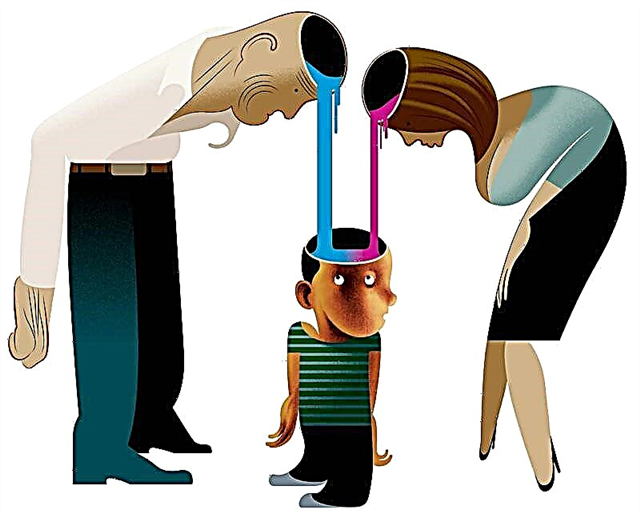The child's body is most susceptible to the influence of negative environmental factors. Even a slight change in nutrition, changes in climatic conditions in the room can cause allergies and other pathologies in the baby, which are accompanied by rashes, redness of the skin on the stomach and other parts of the body. The appearance of a rash in a child is a rather serious symptom, the cause of which must be determined and eliminated. Why does a child have a rash on his stomach and back? When should you see a doctor? What are the measures to prevent the appearance of a rash on the abdomen in infants? This article will answer these and other relevant questions.

Skin rashes are the right sign of health problems
Causes of a rash in a child
The factors that can provoke the appearance of a rash in a child are quite numerous:
- Various allergens;
- Infections;
- Skin contact with negative environmental conditions (for example, wet clothing);
- Insect bites;
- Side effects of medicines.
In addition to the named reasons, there are also a number of diseases, the symptoms of which include a rash on the skin, itching and redness:
- Scabies;
- Measles;
- Chicken pox;
- Scarlet fever;
- Dermatitis;
- Toxic erythema;
- Pemphigus;
- Ritter's disease;
- Erysipelas;
- Meningitis.
Allergic reaction
Irritations of an allergic nature arise under the influence of various environmental factors on the body. The following allergens can cause the immune system reaction, which manifests itself in the form of a rash (resembling goose bumps) and redness on the skin of a newborn:
- Milk mixture;
- Breast milk (provided that the mother consumes foods that can cause allergies);
- Products that are introduced into the diet as complementary foods;
- Dust;
- Animal wool;
- Household chemicals;
- Medicines.

Prickly heat on the baby's stomach from diapers
Parasitic diseases
Often, redness and rashes on the body are provoked by subcutaneous mites. The vital activity of parasites proceeds under the layers of the dermis, where mites enclose themselves with passages and thereby irritate the tissues. One of the pathologies that can be caused by these parasites is scabies. With this disease, pimples itch a lot, and the affected areas become covered with crusts and sores.
Also, the problem of skin rashes can be a symptom of helminthic invasion. Children pull everything into their mouths and still do not know how to perform hygiene procedures on their own. These circumstances significantly increase the risk of infection with parasitic worms.
Insect bites
Local rashes can provoke bites of various blood-sucking insects. These include mosquitoes, bedbugs, ticks, fleas.

Mosquito bites in a baby
Contact dermatitis
Redness and rashes in a child may appear as a result of prolonged skin contact with damp laundry. Also, untimely diaper change is fraught with similar consequences.
Infectious and viral rash
In case of infection with infections, rashes appear especially intense. Usually such conditions are accompanied by high fever, general malaise. In the category of infectious diseases that cause rash, itching and redness, include:
- Chickenpox (a viral disease in which an itchy rash covers the entire body);
- Measles (also caused by a virus)
- Rubella (rash begins on the cheeks, spreads to the neck, chest, trunk);
- Scarlet fever (symptoms are similar to rubella, intoxication is more pronounced, pharyngitis develops);
- Infectious erythema;
- Infectious mononucleosis;
- I'm giving birth. A bacterial infection provokes inflammation in the navel, which then spreads throughout the body;
- Ritter's disease (pemphigus of newborns). It is a staphylococcal infection that causes scalded skin syndrome. It is characterized by large blisters on the entire skin surface. The formations contain a cloudy liquid that comes out when the bubbles burst.
- Meningitis.
The peculiarity of rashes of viral origin is that the symptom occurs on the 1-2 day of the course of the disease. For example, measles and rubella proceed in stages: on day 1, a rash occurs on the face, on the second day it covers the body, buttocks, on the third day it spreads to the arms and legs. Another feature is that against the background of rashes, severe itching occurs (with allergies, pimples do not itch).
Other reasons
In addition to these factors, rashes in babies often occur due to:
- Taking medicines, the side effects of which negatively affect the condition of the skin;
- Toxic erythema. This condition is typical for babies in the first days of life. A red rash, with nodules, disappears after appropriate hygiene procedures;
- Overheating. The child's skin sweats and becomes covered with small red dots - prickly heat. Most often occurs in the groin area;
- Vaccinations. Rash - as a reaction to vaccination (for example, from rubella, measles, mumps, which are given at 12 months).
Interesting. Some parents think that a baby's rash could be caused by teething. However, they are wrong. In the first year there are many changes in the baby's life, and many of them coincide with each other in time, but do not correlate in any way.
Varieties of rash in children
The appearance of a rash on the baby's tummy and other parts of the body can be characterized in different ways, depending on the cause that caused the problem. Doctors distinguish the following types of skin rashes in children:
- Spots. The affected areas have clearly defined boundaries, and the problem area itself is colored in a different shade (most often red). The spots are not determined by palpation, since they do not rise above the skin;
- Bubbles. They are tubercles with a diameter of more than 5 mm. They rise above the surface of the skin, are filled with purulent contents;
- Plaques. The formations are raised above the skin, occupy a lot of space, are slightly flattened;
- Papules. They do not have a cavity, they are resolved without a trace. May be inflammatory and non-inflammatory. The size also varies (1-3mm to 1-3cm in diameter);
- Vesicles. Formations filled with liquid colorless contents;
- Pustule. A cavity containing pus. Limited by a shell;
- Blister. A pink-colored mass without a cavity. Also devoid of clear outlines. In some cases, it has a whitish core. The blister may disappear quickly (after a few minutes) or persist for several hours. It is accompanied by itching, does not leave any traces behind;
- The tubercle. The element has no cavity, the color and relief of the skin above it are changed. The formation leaves behind a scar, it can turn into an ulcer.

Red spots on the baby's skin
Rash treatment options
To determine the method of treatment, it is necessary to establish the cause that triggered the rash in the child. This will require:
- Observe if the baby has symptoms of infection (cough, runny nose, fever).
- Recall whether a baby or an older toddler has had contact with patients (for example, are other children in the kindergarten attended by the child sick with rubella, chickenpox and other diseases).
- Check if the baby has eye inflammation (if there is one in combination with rashes, rubella or measles can be suspected).
- See if new elements of the rash appear, how quickly they pass.
- Recall what the child ate in the next few days. It is also worth paying attention to household chemicals: if a new washing powder has recently been used, then we can assume that the child has an allergy to it.
In any case, you should consult a pediatrician. If the baby needs to be treated, the doctor will select the appropriate therapy option for him.
Reasons for urgent medical attention
The well-known pediatrician E. Komarovsky advises parents to consult a doctor in the following cases:
- If, after the onset of rashes, the skin begins to peel off. In this case, we can talk about scarlet fever.
- The rash does not go away within 2 days, or the baby gets worse.
- The rash is seen in other family members.
- There is confidence that the rash could have occurred as a reaction to one or another medication.
According to the pediatrician, cases when parents need to take urgent measures are very rare. The doctor resorts to their explanation:
- Baby's age from birth to 6 months;
- The rash is accompanied by a significant increase in body temperature;
- In addition to the rash, the child experiences severe pain (headache, stomach ache);
- Skin problems are accompanied by nausea and vomiting.
Important! Komarovsky pays special attention to the rash that occurs with meningitis. This disease threatens the life of the child, therefore, if such a rash is found, an ambulance must be called. This type of rash does not disappear with pressure. To test this, you need to firmly attach a glass to the speck and see if the skin underneath has turned white. If this does not happen, you need to urgently call a doctor.
Who to contact
In most cases, the help of a pediatrician is sufficient. However, if a child suspects a serious illness, you will need to consult other specialists: a dermatologist, gastroenterologist, allergist, infectious disease specialist. If the situation threatens the baby's life, you must immediately call an ambulance.
How to reduce itching and rash symptoms
To reduce discomfort, the doctor may advise the treatment of problem areas with iodine or brilliant green. This measure allows not only to reduce itching, but also to disinfect the affected area.
Effective therapy methods
The choice of a particular treatment depends on the cause of the baby's abdominal rash. If, for example, a baby has prickly heat, it is recommended to bathe the baby in a weak solution of potassium permanganate or treat the problem area with a decoction of the train. If the rash is the result of an allergic reaction, then the baby must be protected from the effects of allergens on his body. You will also need to take antihistamines. If the baby has scarlet fever, then he will need antibiotic therapy.

Visit to a dermatologist
Care rules and prevention
Here's what you recommend to do to reduce your child's chances of getting a rash:
- Bath the baby every day with soap, then wipe it with a clean towel;
- Spend more time outdoors;
- Carry out hardening;
- Systematically check baby's skin for rashes;
- Monitor the temperature and humidity in the room;
- Change the diaper in a timely manner, observe the rules of hygiene;
- Eliminate possible allergens from the child's life.
If a rash is detected in time and its nature and origin is established, it is possible to quickly identify the disease and prescribe adequate treatment. Compliance with preventive measures will allow you to avoid the appearance of rashes in a child, to prevent the consequences and complications of pathologies.



